Immerse your young children in the marvels of the animal kingdom with baby animal lesson plans. These plans provide a charming combination of activities that encourage a love for animals, build vocabulary, and nurture empathy. From interactive learning sessions to hands-on projects, kids will learn baby animal names, habitats, and fascinating facts, fostering a strong bond with nature. Engage in creative activities such as mobile making and survival discussions to boost cognitive skills and appreciation for wildlife. Discover a world of fun and education, where each lesson uncovers new discoveries and knowledge waiting to be explored.
Key Takeaways
- Interactive activities like matching games engage preschoolers in baby animal lessons.
- Hands-on projects promote creativity and fine motor skills in fun learning.
- Explore baby animal habitats to understand ecosystems and survival strategies.
- Incorporate sensory exploration and discussions for memorable learning experiences.
- Fun facts about baby animals enhance understanding of their unique adaptations and growth.
Importance of Baby Animal Lessons
Baby animal lessons are vital for cultivating students' early fascination with the animal kingdom and nurturing a lifelong love for animals. These lessons play an essential role in introducing young children to the wonders of nature and fostering a sense of empathy towards living creatures.
By learning about the different names of baby animals and their parents, students not only expand their vocabulary but also develop language skills. Understanding the life cycles of baby animals teaches children about the circle of life and the care that animals provide for their offspring.
Additionally, engaging in activities related to baby animals enables students to enhance their observational skills, nurture curiosity, and appreciate the diversity of life around them. Through these lessons, children are encouraged to explore the natural world in a hands-on and interactive manner, laying the foundation for a deeper connection with the environment and the creatures that inhabit it.
Interactive Learning Activities
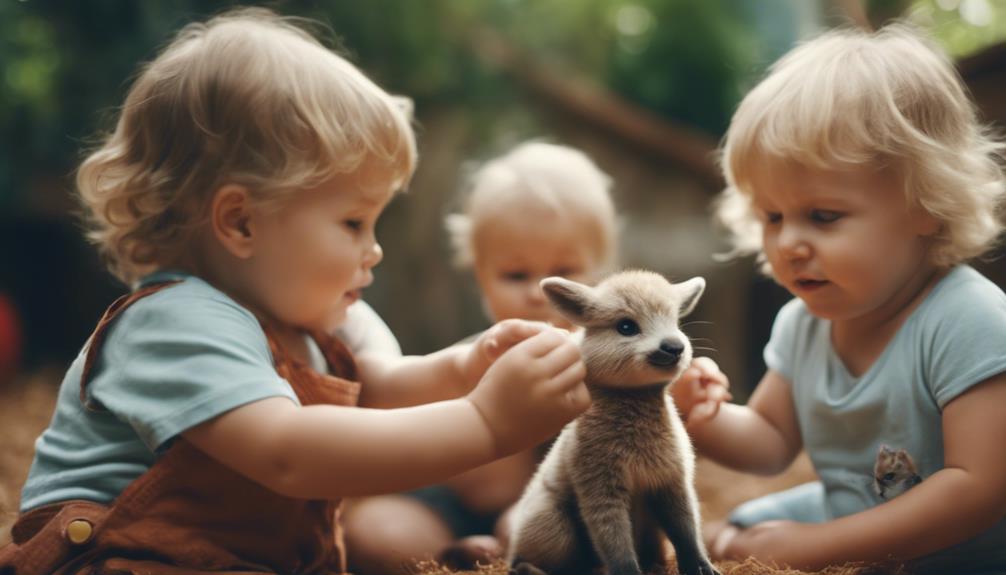
How can interactive learning activities enhance your students' engagement with baby animal lessons?
Educational games play an important role in making the learning experience fun and memorable for preschoolers. By incorporating hands-on activities like matching baby animal pictures with their names, children actively participate in the lesson, reinforcing their understanding of different offspring. These interactive games not only educate but also entertain, keeping young learners engaged and interested in the topic.
Moreover, sensory exploration is essential in early childhood education. Including soft toy baby animals allows children to engage in tactile learning experiences, stimulating their senses and making the lesson more interactive. Crafting a baby animal mobile not only enhances fine motor skills but also promotes cognitive development through creative expression.
Furthermore, discussing how animals care for their babies and drawing parallels to human relationships encourages social-emotional development in children. These interactive activities not only teach about baby animals but also foster important skills and values in young learners, making the lesson more enriching and impactful.
Baby Animal Names and Habitats
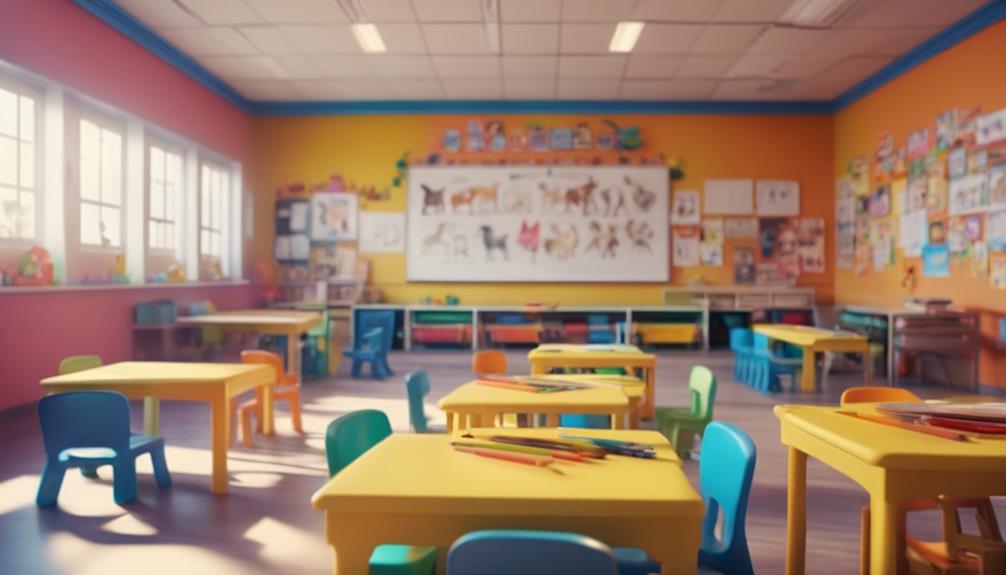
Baby animal names are unique to each species, such as calves, kittens, and puppies.
Understanding these names can help you connect with the wildlife around you.
Exploring animal habitats reveals where these young creatures live and grow, fostering a deeper appreciation for the natural world.
Naming Baby Animals
Understanding the unique names of baby animals can enhance your awareness of different species and their habitats. Baby animals have specific names like calf for a baby cow, kitten for a baby cat, and puppy for a baby dog. Knowing these names not only helps children identify and connect with various species but also introduces them to the significant habitats these animals live in. By learning about baby animal names, preschoolers can engage in a fun exploration of the natural world and start understanding the importance of wildlife conservation.
Teaching about baby animals involves discussing their habitats and how they survive in the wild. This knowledge can spark conversations about the vital role animals play in maintaining our ecosystem's balance.
Exploring Animal Habitats
By exploring the habitats where baby animals reside, you can gain a deeper insight into their world and the interconnectedness of ecosystems. Baby animals, such as calves, efts, and hatchlings, have specific names based on their species. Understanding these names opens up discussions about their habitats and survival strategies.
Teaching children about baby animal names and habitats not only educates them but also fosters a deeper appreciation for wildlife. When kids explore different habitats where baby animals live, they learn about the diversity of ecosystems. This exploration allows children to connect baby animal names with their habitats, enhancing their understanding of the natural world.
Through these connections, young learners can see how baby animals adapt to their environments, develop unique characteristics, and contribute to the delicate balance of various habitats. Understanding how baby animals interact with their habitats is an essential step in appreciating and conserving the rich tapestry of ecosystems worldwide.
Hands-On Projects for Kids

Get ready to engage your kids in fun and educational activities with creative craft projects and interactive science experiments. These hands-on projects won't only spark their curiosity but also help them learn about baby animals in an interactive way.
From making animal-themed mobiles to exploring the science behind animal habitats, these activities will keep your little ones entertained while they absorb valuable lessons.
Creative Craft Activities
Explore fun and engaging craft activities that foster creativity and fine motor skills in children, including creating baby animal masks, puppets, and paper plate animals. These hands-on projects are designed to help kids develop essential skills like imagination and creativity.
Craft activities such as making baby animal collages, footprint art, and sensory bins centered around animals provide children with a platform to express themselves artistically while also enhancing their cognitive abilities.
Engaging in these creative projects not only promotes sensory exploration but also aids in the development of social-emotional skills in young learners. By immersing themselves in crafting baby animal-inspired creations, children can enhance their learning experiences, foster their imagination, and improve their artistic expression.
Craft activities with baby animals offer an excellent opportunity for children to explore their artistic side while having fun. Encouraging kids to engage in these projects can lead to a deeper understanding and appreciation of different animals while honing their fine motor skills.
Interactive Science Experiments
Engage kids in interactive science experiments to explore the world of baby animals through hands-on projects that promote curiosity and critical thinking. Interactive experiments provide a fun and educational way for children to learn about the life cycles, behaviors, and characteristics of various baby animals. By participating in these projects, kids can develop a deeper understanding and appreciation for the animal kingdom while honing their scientific exploration skills.
Consider the following table showcasing some engaging interactive science experiments related to baby animals:
| Experiment | Description |
|---|---|
| Egg Hatching Simulation | Mimic the process of a baby bird hatching from an egg using materials like clay and a small toy bird. |
| Frog Life Cycle Puzzle | Assemble a puzzle depicting the stages of a frog's life cycle, from egg to tadpole to frog. |
| Habitat Diorama Building | Create a miniature habitat for baby animals using craft materials and learn about their environment. |
These activities not only entertain children but also stimulate their curiosity and critical thinking skills through hands-on exploration.
Quiz Time: Test Your Knowledge
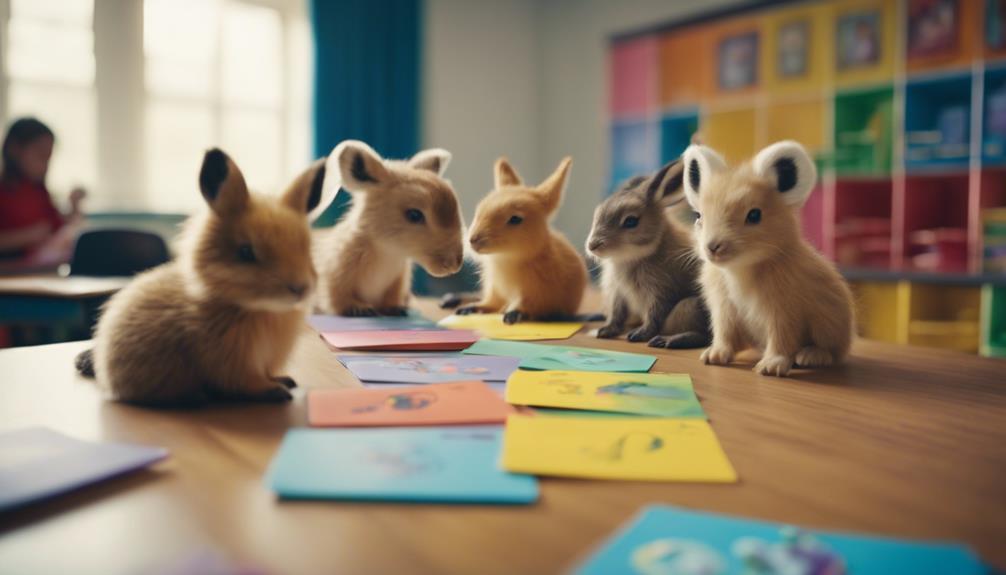
Test your knowledge with this engaging quiz on baby animals! Here are some fun questions to challenge your understanding of these adorable creatures:
- Do you know what a baby cow is called?
- Can you identify the term for a young cat?
- What's the name given to a baby dog?
These questions aim to test your knowledge of common English terms used to describe baby animals. By learning these names, you can expand your vocabulary and gain a deeper understanding of the animal kingdom.
Mastering these basic terms won't only enhance your language skills but also help you appreciate the diversity and beauty of the natural world. So, take a moment to think about these questions and see how well you know the names of different baby animals. Good luck!
Engaging Discussions on Survival

Survival patterns in animals and plants present fascinating insights into the strategies that enable different species to thrive in their environments. By discussing these survival patterns, you can explore the diverse ways in which animals have evolved to adapt and survive in their habitats. From camouflage to migration to symbiotic relationships, each species has unique survival strategies that help them navigate the challenges of their surroundings.
Encouraging discussions on survival can also prompt students to think critically about how different habitats impact the persistence of various organisms. By examining real-life examples and engaging in interactive activities, such as quizzes, students can deepen their understanding of the intricate relationship between living organisms and their environments.
Utilizing baby animal pictures to illustrate these survival patterns can make the learning experience more engaging and relatable for young learners. These visuals can help students visualize how different species employ specific strategies to safeguard their existence in the wild, fostering a deeper appreciation for the wonders of nature.
Creative Mobile Making

Let's explore a hands-on activity that involves creating a decorative display of baby animal pictures called mobile making. This activity isn't only fun but also a great way for young learners to reinforce their knowledge about baby animals.
When engaging in mobile making, you will:
- Tie strings to index cards with the written names of baby animals.
- Attach these cards to hangers to create a visually appealing mobile.
- Enjoy the process of creating a unique display of baby animals while learning their names and enhancing fine motor skills.
Through mobile making, children engage in a tactile learning experience that promotes creativity and familiarity with different baby animal species. As they proudly display their mobiles, they can actively identify and associate the names of the baby animals they've learned during this activity.
Mobile making is an interactive and enjoyable way to enhance learning and create a lasting visual representation of baby animals for little ones.
Fun Facts About Baby Animals
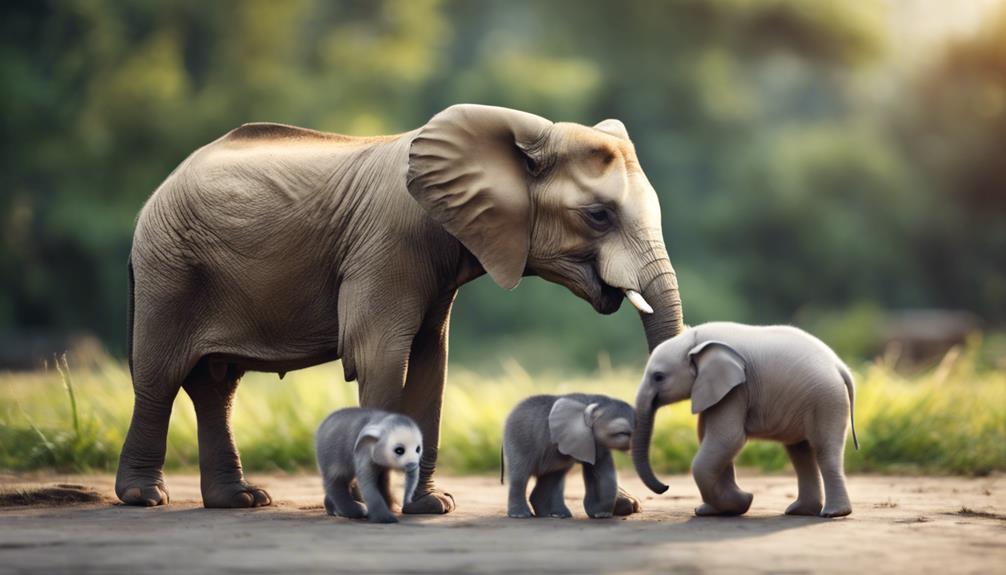
Discover fascinating fun facts about baby animals that will amaze and delight young learners.
Baby animals are often born helpless, relying on their parents for care and protection as they navigate the early stages of their life cycle.
Some, like puppies and kittens, are born blind and deaf, using their sense of touch and smell to explore the world around them.
These tiny creatures showcase remarkable adaptations, such as camouflage or mimicry, to aid in their survival within their habitats.
Additionally, precocial animals like ducklings and chicks can walk and feed themselves shortly after hatching, demonstrating their rapid development.
As baby animals grow, they reach maturity at varying rates depending on their species, highlighting the diverse paths they take in their life cycles.
These intriguing facts about baby animals provide a glimpse into the wonders of nature and the incredible journey each young animal undertakes as it matures.
Lesson Extension Ideas
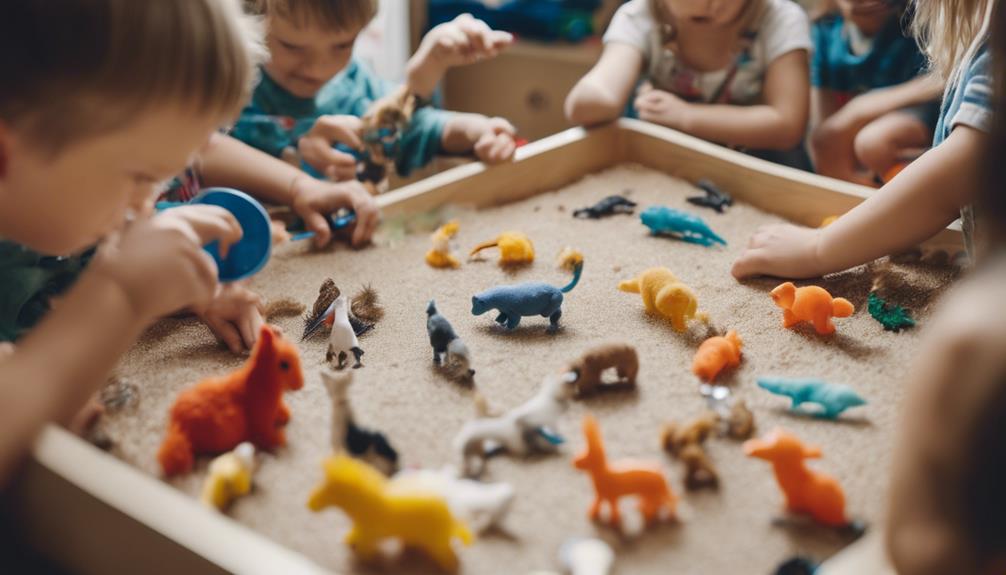
Enhance your baby animal lesson plans with engaging and interactive extension ideas. To guarantee accurate language acquisition and foster a complete learning experience, consider the following extension activities:
- Sensory Activities: Utilize touch and feel books featuring textures of animal fur to provide a hands-on exploration of different species. This tactile experience enhances sensory development and reinforces understanding of animal characteristics.
- Auditory Learning Games: Engage children in interactive games and toys that produce realistic animal sounds. By associating sounds with specific animals, auditory memory and recognition skills are honed while ensuring accurate language acquisition.
- Language Development Through Songs: Enhance vocabulary and memory retention by incorporating animal-themed songs and rhymes into your lesson plans. Encouraging children to sing along and mimic animal sounds promotes language development in a fun and engaging manner.
Frequently Asked Questions
How to Teach Children About Baby Animals?
To teach children about baby animals, show them pictures and names to help identify different offspring. Discuss animal sounds and care behaviors. Explore survival patterns for deeper understanding. Encourage interactive activities like naming challenges and creating baby animal mobiles for fun learning.
How Do You Teach Animals to Kindergarten?
You teach animals to kindergarten by using engaging activities like animal matching games and sound identification. Incorporate hands-on experiences with animal toys, puzzles, and books. Introduce various animals and their offspring for interactive learning.
How Do I Teach My Toddler Farm Animals?
To teach your toddler farm animals, engage them in hands-on experiences with toy animals, books, and videos. Use sensory activities like animal sounds and textures to make learning fun. Incorporate songs, rhymes, and games for interactive learning.
What Is the Life Cycle of a Baby Animal?
To understand the life cycle of a baby animal, observe its journey from birth to adulthood. Witness growth, development, and reproduction. Each species has a unique cycle. Appreciate nature's wonders and the diversity of living organisms.
Conclusion
To sum up, baby animal lesson plans offer a fun and engaging way for little ones to learn about the world around them.
By incorporating interactive activities, hands-on projects, and discussions on survival, children can deepen their understanding of nature and wildlife.
So, why wait? Start exploring the fascinating world of baby animals today and watch your child's curiosity and knowledge grow like a weed in a garden!










